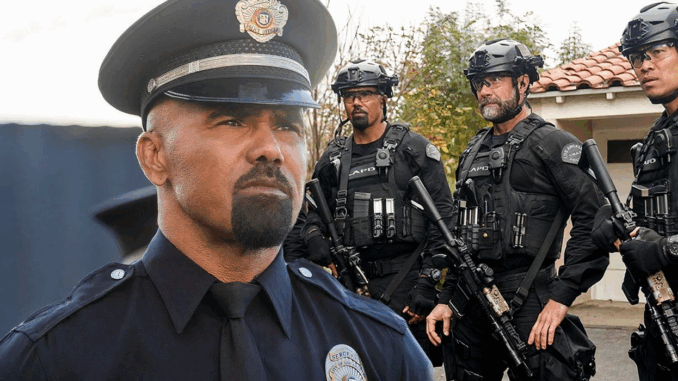
After 3 Cancelations, ‘S.W.A.T.’ Has Defied Its Fate Again in the Most Unexpected Way
The Roller-Coaster Life of ‘S.W.A.T.’
If you’ve been following TV dramas over the past few years, you’ll know how rare it is for a show to survive multiple death sentences. Yet that describes the journey of S.W.A.T.. The series, led by Shemar Moore as Sergeant Daniel “Hondo” Harrelson, has been canceled three times—only to return and reinvent itself each time. It sounds like a plot twist inside the show itself. But that’s precisely the story: how a broadcast procedural kept defying its own fate.
In this article, we’ll unpack how S.W.A.T. navigated network politics, fan passion and industry shifts to keep going—what changed behind the scenes, why it mattered, and what this means for TV shows in danger of disappearing. Ready? Let’s roll.
First Cancelation – The Unexpected End of Season 6
May 2023 Shockwave
In May 2023, CBS announced that S.W.A.T. would end after its sixth season. Fans, cast and crew were blindsided. The series had delivered dependable ratings and a loyal audience.
Why the Network Pulled the Plug
It wasn’t purely about creative fatigue or poor viewership. From what insiders reported, the decision boiled down to business economics—licensing cost, production expenses and shifting priorities inside the network.
First Resurrection – Season 7’s Surprise Renewal
Fan Outcry & Quick Reversal
Just days after the cancelation news, CBS reversed course and ordered a seventh season—labeling it a “final” run. The sudden U-turn showed how strong the fan base was and how much leverage a vocal audience can still wield.
What Changed Behind the Scenes
When TheWrap reported the renewal, they noted that negotiations between CBS and the studio (Sony Pictures Television) produced a revised licensing fee that made the numbers work. It’s a reminder: behind every renewal is a financial deal.
Second Resurrection – Enter Season 8 and Another Renewal
April 2024 Marked Another Reprieve
Less than a year later, with the public expecting Season 7 to be the final curtain, CBS again extended S.W.A.T. for an eighth season. The network evidently still saw value in the brand, despite concerns about longevity.
Signs of Trouble Yet Hopes Held
Even though renewal was announced, ratings were sliding. The average viewership for season 8 reportedly fell nearly 20% from the prior season. Still, the show had enough buzz to carry on—thanks in part to the star power of Shemar Moore and the recognition of the S.W.A.T. brand.
Third Cancelation – March 2025 Brings the Final (For Now) End
The Third Time’s the Charm(?)
On March 6, 2025, the third cancelation arrived. CBS stated that S.W.A.T. would not be renewed beyond season 8, making that the final chapter—for now.
Why This Time Felt Permanent
This cancelation differed. The network did not engage in contract talks with the studio, according to reports. Renewal seemed off the table. Also, S.W.A.T. was among several outside-studio shows CBS let go that cycle.
Actor & Creator Reactions
Shemar Moore took to Instagram to share how he told the crew the news—you could tell this one hurt. He said: “We are canceled again. It sucks. It’s sad.” Showrunner Andrew Dettmann called it “heartbreaking news.”
Defying the Odds – What “Survival” Looked Like
Two Comebacks Before This Point
It’s rare for a show to be canceled, restored once—but twice? That’s almost unheard of. S.W.A.T. pulled it off. Moore celebrated that fact: “Uncanceled twice, two years in a row.”
Fan Base and Streaming Impact
The series found new life on streaming platforms. Fans could watch all seasons at their pace, creating tailwinds of popularity. Also, the narrative of a strong lead, Hondo’s character, and socially-relevant themes kept engagement high.
Brand Recognition & Franchise Value
S.W.A.T. had by then become a brand. The name, concept and star power gave it latent value—even when ratings dipped. That made it a viable candidate for renewal discussions and eventual spin-offs.
What This Means for Future TV Shows
Renewals Are Not Just About Ratings
S.W.A.T.’s story shows that viewership matters — but so do economics, licensing, production cost, and studio-network deals. If the math doesn’t compute, even decent ratings may not save a show.
Fan Advocacy Can Move the Needle
The first two revivals of S.W.A.T. came after robust fan response. In the streaming era social media chatter and campaign momentum matter. If you’re a fan of a show in danger—your voice could matter.
Secondary Platforms Offer a “Life After”
With S.W.A.T. heading to new streaming homes and offering global reach, the idea of “cancelation” is no longer absolute. A show might cease network broadcasting, yet live on via streaming or spin-off formats.
Spin-Offs & The Next Chapter
S.W.A.T.: Exiles & The Brand Expansion
Even though the original run on CBS ended, the franchise isn’t dead. Sony announced a spinoff titled S.W.A.T.: Exiles featuring Shemar Moore’s character. Production is planned for 2025.
How a Spin-Off Keeps the Flame Alive
Spin-offs allow beloved characters to carry over, give the brand a fresh setting or tone, and appeal to both loyal and new viewers. This can be a smart “everything old is new again” strategy.
The Emotional Side – Why Fans Really Cared
Attachment to Hondo & the Team
S.W.A.T. wasn’t just about tactics and guns—it had heart. Hondo’s leadership, his loyalty to his crew, his struggles with community relations—these human elements made people invest emotionally.
Community & Representation
The show addressed relevant issues (race, policing, community trust) and did it in a mainstream slot. Fans felt it mattered. The cancelation felt like losing a safe space.
What Actually Improved Over Time?
Production Value & Cast Growth
Over eight seasons, the show refined its action, visual intensity, and character depth. The cast matured, the arcs deepened—this wasn’t static.
Streaming Tailwind
As the seasons progressed into streaming libraries, new fans discovered S.W.A.T. The binge-culture effect boosted its profile and may have contributed to its revival potential.
Why Now Might Be the Right Time to Wrap Up
Ratings Declined
Despite its earlier strength, Season 8 saw diminished viewership (≈4.9 million, down about 20 % from the prior season) according to reports.
Cost and Studio Relationships
Because the show is produced by Sony but aired on CBS, the financial negotiations are more complex. This kind of arrangement makes longevity harder.
Fresh Spin-Off Might Be the Best Move
A reboot or fresh offshoot allows for new stories, easier budgets, and creative resets. Instead of forcing the original team to keep going, the spin-off offers a cleaner slate.
Lessons for TV Fans, Creators & Networks
For Fans
Stay vocal. Watch shows on varied platforms. Be part of the conversation. Sometimes your engagement makes a difference.
For Creators
Build shows with both loyal audience appeal and brand extensions in mind. Think long-term—spin-offs, streaming moves, global reach.
For Networks
Legacy shows have value beyond immediate ratings. Brand equity, international licensing, merchandise and streaming tail can matter. Decisions should reflect full value, not just next-week numbers.
Final Takeaway – S.W.A.T.’s Unexpected Victory
S.W.A.T.’s story is proof that cancellation doesn’t always mean the end. For a show to be canceled three times and still leave a legacy is unusual. It shows resilience—not just for the series, but for the people behind it. The network shifts, studio economics, fans, and streaming platforms all played a role.
Whether the original show truly ends here or evolves into something new via spin-off or streaming, S.W.A.T. has already defied typical TV fate. It’s not just “off the air” – it’s “on to the next chapter”. And that’s kind of inspiring.
Conclusion
In the unpredictable world of television, where shows can disappear overnight, S.W.A.T.’s journey stands out. Canceled three times, revived twice, spun-off once, and still talked about in 2025—it’s the kind of story you don’t expect. Yet here we are. For fans, creators and networks alike, it offers a lesson: in TV, few things are ever truly over. The brand you build, the audience you earn, and the emotions you stir might carry you far beyond your penultimate season. S.W.A.T. didn’t just survive—it reshaped its fate.
FAQs
Q1: How many times was S.W.A.T. canceled?
A: The series was canceled three separate times by CBS: once after season 6, then again after season 8, with interim renewals in between.
Q2: Did S.W.A.T. ever find a new home after cancelation?
A: While the original network run ended, the show’s seasons have moved to streaming platforms (e.g., Netflix). Also, a spinoff titled S.W.A.T.: Exiles is in development.
Q3: Why did CBS keep renewing it despite canceling it multiple times?
A: The show had a strong brand and loyal fan base, and previous renewals came after negotiations that improved the financial model for the network and studio.
Q4: What makes S.W.A.T.’s story unusual in TV history?
A: It’s rare for a show to be canceled, then rescued twice, and still maintain strong brand presence. Its resilience and spin-off strategy stand out.
Q5: What’s next for the S.W.A.T. franchise?
A: A spinoff (S.W.A.T.: Exiles) is in the works, with Shemar Moore returning as Hondo and new characters joining. The concept seeks to rejuvenate the brand for the streaming era.


